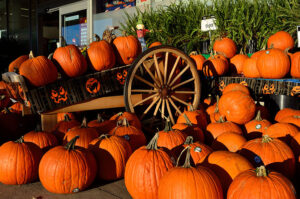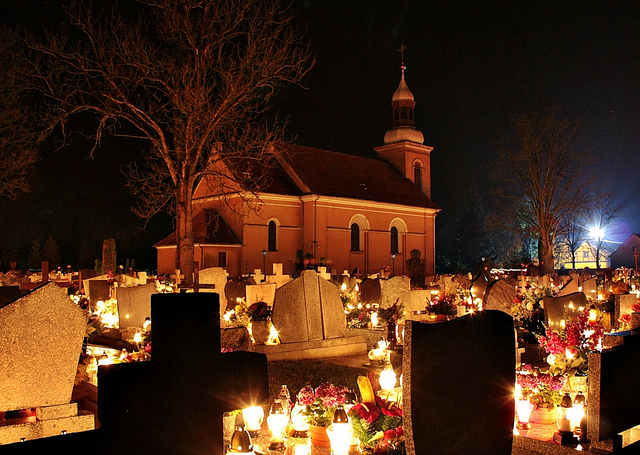 Every port we visited this month, sailing from Venice to Lisbon, had a few shops decked out with American Halloween paraphernalia. Granted, none of them took it to the extremes of US stores—not yet! But you can see the power of global marketing making inroads. Masks (traditionally associated with pre-Lenten Carnival in Europe), plastic pumpkins, and pallid witches (not nearly as scary as witches in the Grimm Fairy Tales) leered out into the stately market squares. It made me sad.
Every port we visited this month, sailing from Venice to Lisbon, had a few shops decked out with American Halloween paraphernalia. Granted, none of them took it to the extremes of US stores—not yet! But you can see the power of global marketing making inroads. Masks (traditionally associated with pre-Lenten Carnival in Europe), plastic pumpkins, and pallid witches (not nearly as scary as witches in the Grimm Fairy Tales) leered out into the stately market squares. It made me sad.
Why sad? Well, I’ve long been saddened to see a limited child’s holiday (a single fun evening traipsing the neighborhood wearing homemade costumes) turn into a massively marketed, overblown, tacky, often sexualized free-for-all. Did I state that subtly enough?
I know, I know. There are reasons it has happened. Our streets are no longer considered “safe” enough for kids to roam their neighborhoods in gleeful abandon. Parents must go, or trail the kids in cars (ugh). Adults began dressing up and having parties. Prepackaged super-hero costumes took over. The whole thing became expensive and overblown.
So yes, I’m sad to see such marketing hoopla infiltrate Europe. Because in most of Europe, the holiday that sparked the name “Halloween” is still alive and well. Even non-church goers know that Halloween is just the eve before November 1st, All Saints’ Day (All Hallows’ Day in the English tradition). Then, particularly on November 2nd, All Souls’ Day, people of all persuasions flock to the cemeteries to honor the departed, bearing sumptuous garlands of flowers (real, not plastic) and candles. If you’ve ever seen the flower markets in Europe in late October, you know what I’m talking about.

Our colleague John de Gree has provided an excellent post to teach children about the derivation of Halloween, going back to Celtic times. I wish everyone could read his post, particularly a young gal I met at the end of August who worked in a mobile-phone shop. She confided (in great excitement) that she was getting off work soon to go look for her Halloween costume.
“Really?” I said. (The idea of a hot Texas day evoking Halloween did not compute in my mind.) Halloween, she proclaimed, was the best holiday. I asked her why. She couldn’t tell me, except that it was SO fun.
Okay, . . . you know what I said next, don’t you? I asked her if she knew why Halloween was celebrated. She had no idea. I asked her if she knew what the word Halloween meant. “Scary?” she guessed. Nope, I said. Finally, I asked if she knew what November 1st signified across much of the Western world? Of course, she did not.
I quickly filled her in. She was astonished. I’m not sure she believed me, so I encouraged her to research it herself. I wish I’d had the link to de Gree’s post to give her. If I weren’t in Germany right now, I might drive back to the shop and share it with her.
This year, we will happily pass over Halloween and take full advantage of All Saints’ Day and All Souls’ Day. Then we’ll celebrate St. Martin’s Day (November 11), when families with little children will be gathering in the square swinging wonderfully decorated lanterns, singing traditional songs, and foraging for candy that gets scattered here and there.
Not one of those three holidays is susceptible to much commercialism! Meanwhile, if you do celebrate Halloween, then enjoy it by all means! I carry lovely memories of Halloween fun from my childhood. But I also remember that children left it behind at the ripe old age of, say, sixth grade.
So, where you can, educate others as to Halloween’s origins. Tell them about the significant holidays of the season on November 1st and 2nd–holidays which help us understand far more meaningful aspects of our Western Cultural Heritage.



